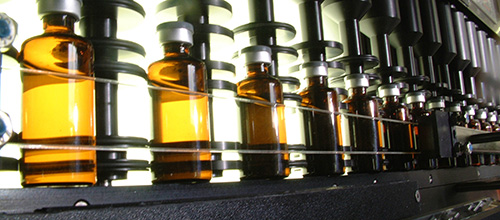News from the US on particles in injectables
Recommendation

Thursday, 12 February 2026 9 .00 - 17.00 h
Particles in injectable products are still a hot topic in 2013. According to the FDA, almost one quarter of all recalls of injectable drugs during the last five years was caused by particles. It is likely that some of these recalls might have been avoided by a better visual inspection system. Also the number of "Forms 483" has increased. One reason is for example, that the FDA now checks if the companies do supplemental inspections of products if a 100% inspection is not possible (e.g. suspensions or products in opaque containers), as it is written in the USP. Another problem is the vague requirement for injectable products that every lot has to be "essentially free" from visible particles" in the USP <1>. The pharmaceutical industry still struggles with this wording.
The upcoming new monograph <790> "Visible Particulates in Injections" could finally provide a good definition. In the draft, USP defines "essentially free" as a batch of parenteral product that has been 100% inspected, meeting an AQL of 0.65% or tighter. It is aimed to officially publish the new monograph in USP37-NF32, mid of 2014. It will be interesting to see, if the European Pharmacopeia will also get more precise.
Oversight of USP chapters concerning parenteral products and particle testing:
| Chapter | Name | Last in | comment |
| <1> | Injections | PF39(5), In-Process Revision. USP Workshop November 22, 2013. Comment deadline: November 30, 2013 | Removal of labeling, packaging, container and storage sections putting them to the chapters <7>, <659> and <697> |
| <787> | Subvisible Particulates Matter in Therapeutic Protein Injections | Draft , last in PF39(2);New in USP37-NF32 1S) | Improvements to the historical <788> light obscuration method for protein products. Limits 10µm and above remain the same as in <788>; however, data collection below 10µm is advised. TOTAL load is not more than 6000 ≥ 10µm and 600≥ 25µm for ALL forms, LVP, SVP and dilutions thereof |
| <788> | Particulate Matter in Injections | USP36, NF 31 | <788> will remain after <787> and <790> become effective and will be continually improved. Additional methods will be explored. |
| <789> | Particulate Matter in Ophthalmic Solutions | USP36, NF 31 | Methods for particle determination the same as <788>; however, limits are ≥10 µm, ≥25 µm and ≥ 50µm per mL and stricter. |
| <790> | Visible Particulates in Injections | Draft ;Likely to become effective mid of 2014 (USP37-NF32) | Requirements for the illumination for the manual visual inspection are given. The term "essentially free of particles" will be defined more precisely as a batch of parenteral product meeting an AQL of 0.65% or tighter. A procedure to evaluate a product already shipped is given, when there is a concern regarding particles. |
| <1788> | Methods for the Determination of Particulate Matter in Injections and Ophthalmic Solutions | USP36, NF 31, 2nd supplement | Informational chapter for historical USP light obscuration and membrane microscopy methods, containing calibration and standardization detail for both methods. |
| <1790> | Visual Inspection of injectable products | Document in expert panel, unpublished | Chapter will provide general information and guidance for best practices in the area of particulate and container/closure defect monitoring and control |
A member of the USP expert committee will speak at the ECA conference on Particles in Parenterals, which will take place in the context of the Pharma Congress 2014 in Duesseldorf. He will give a further update on the developments in the USP.




